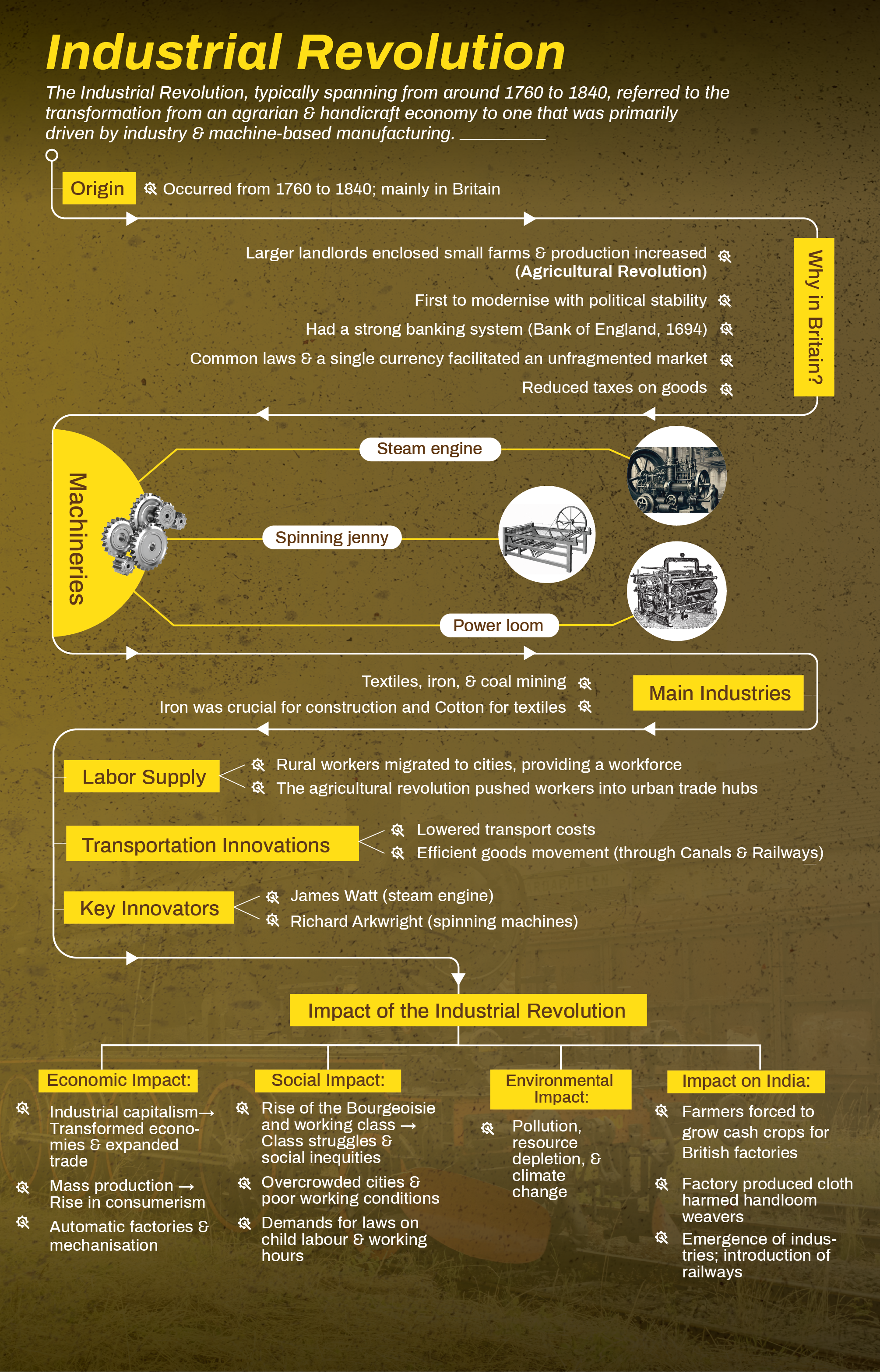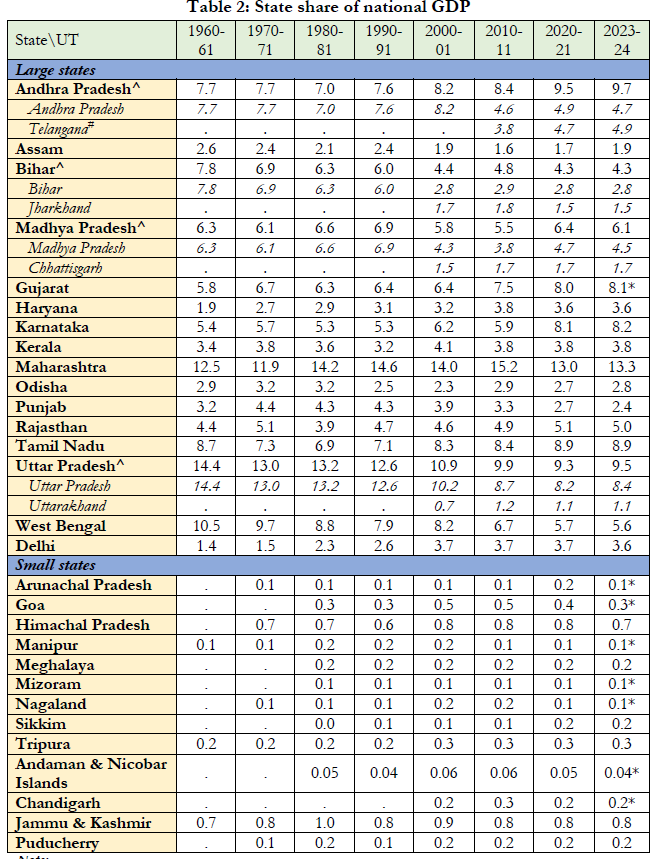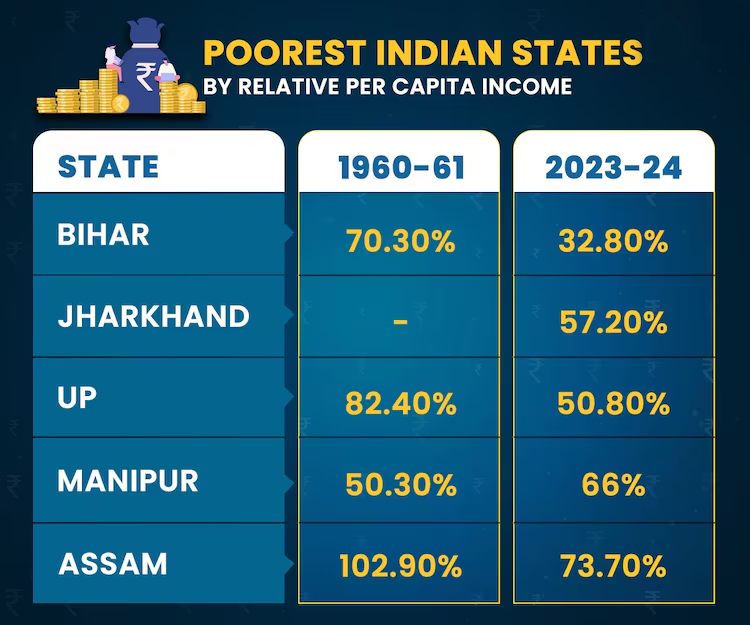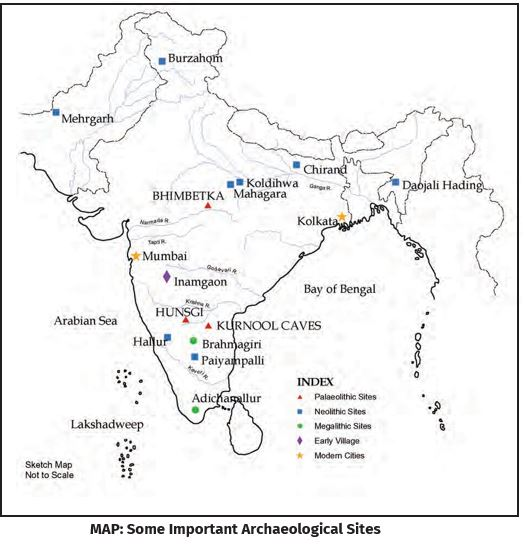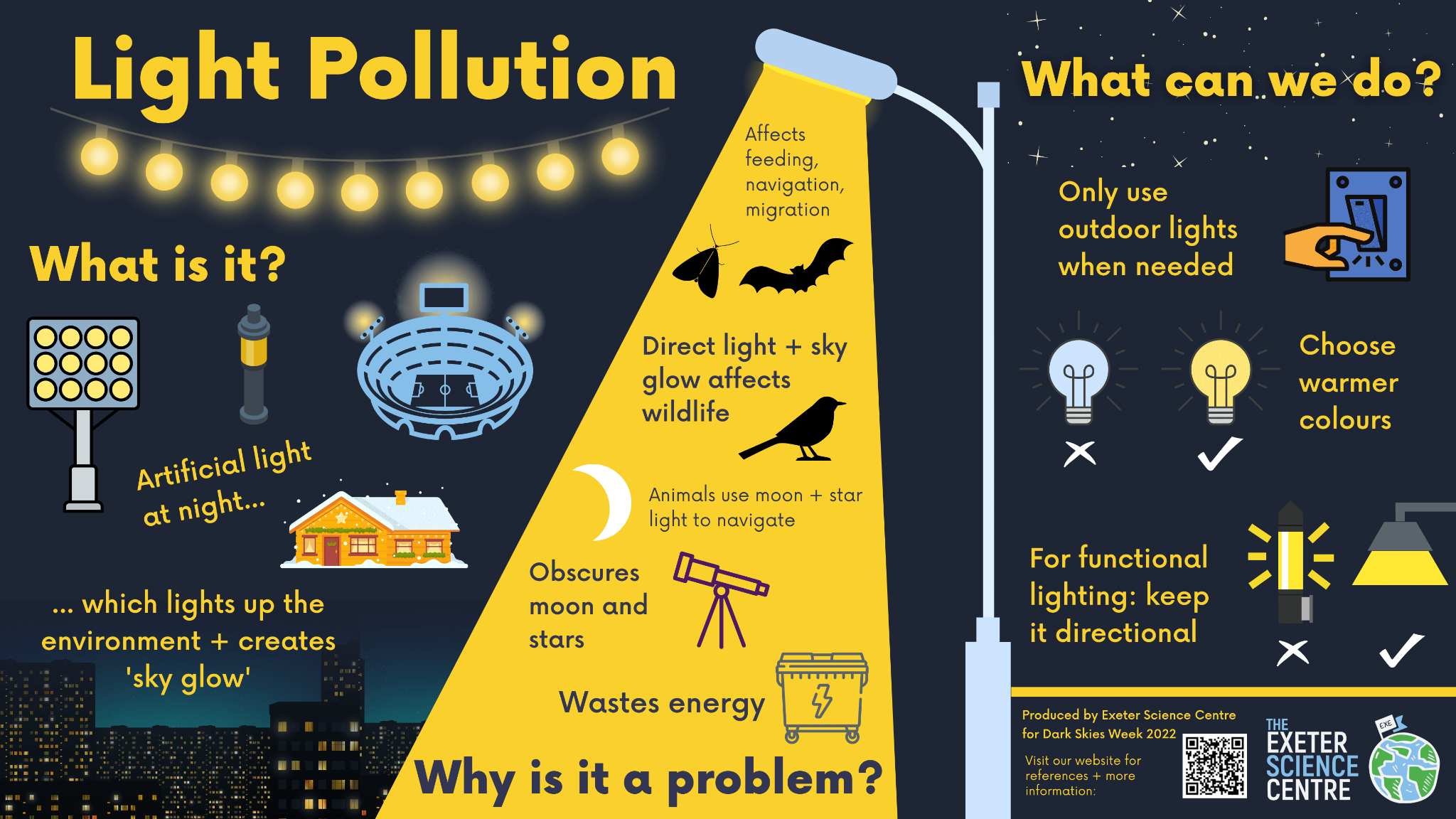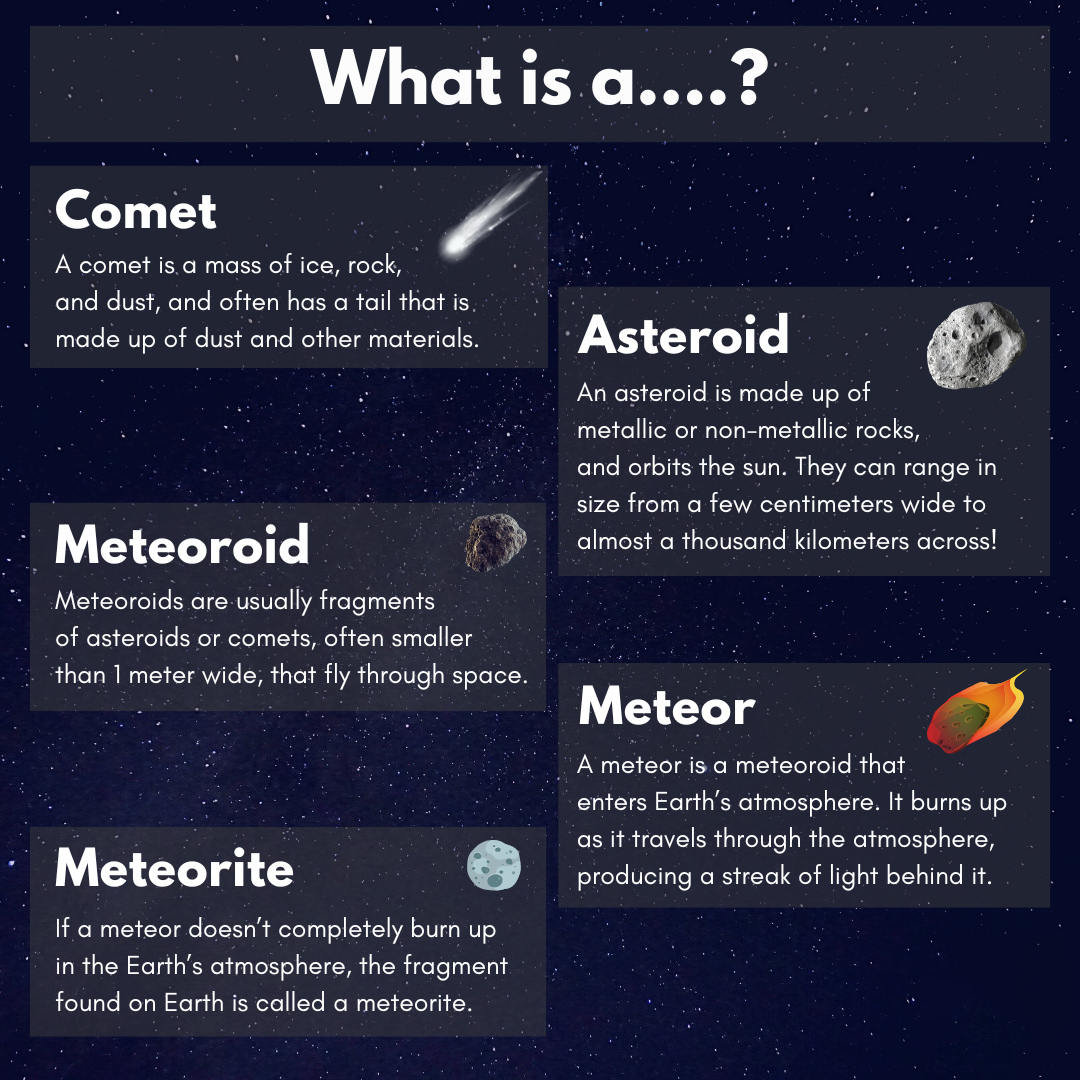Infographics
Governance
Steel Sector Decarbonization
For Prelims: Performance-Linked Incentives, Carbon capture, Natural gas, Carbon dioxide, Greenhouse Gas (GHG), Fossil fuels, Green hydrogen, Circular economy, PAT (Perform, Achieve, and Trade) scheme
For Mains: India’s steel industry and greenhouse gas emissions, Significance of decarbonising India’s steel sector, Government Initiatives and Policies
Why in News?
The Ministry of Steel is actively considering funding strategies to support decarbonization initiatives in the steel sector, in response to increasing environmental concerns and the push for sustainable industry practices.
What Options are Being Considered for Steel Sector Decarbonisation?
- Performance-Linked Incentives (PLI): The Steel Ministry is contemplating using PLI schemes to fund decarbonisation projects. Discussions are in the initial stages, and the exact mechanisms are yet to be finalised.
- A Steel Ministry report estimates that nearly USD 300 billion will be needed for comprehensive decarbonisation. This includes over USD 13 billion for technology upgrades at small steel mills and an additional USD 150 billion for advanced technologies like direct reduction of iron and carbon capture.
- Direct reduction of iron is the removal of oxygen from iron ore or other iron bearing materials in the solid state, i.e. without melting, as in the blast furnace.
- India’s Green Steel Policy is in the works, with several PLI schemes being discussed for decarbonisation activities in the sector, though still in initial stages.
- A Steel Ministry report estimates that nearly USD 300 billion will be needed for comprehensive decarbonisation. This includes over USD 13 billion for technology upgrades at small steel mills and an additional USD 150 billion for advanced technologies like direct reduction of iron and carbon capture.
- Natural Gas: Natural gas is being considered as a potential substitute for coal or coke in blast furnaces to reduce emissions.
- Energy consumption in most Indian steel plants is 6-6.5 Gigacalorie (Gcal)/tonne, higher than 4.5-5 Gcal/tonne in foreign plants, due to coal use and older technologies.
- India's steel industry carbon dioxide (CO2) intensity is projected to reduce from 3.1 T/tcs( (tonne / tonne of crude steel produced) in 2005 to 2.64 T/tcs by 2020, with a goal of 2.4 T/tcs by 2030 (1% annual reduction).
- Energy consumption in most Indian steel plants is 6-6.5 Gigacalorie (Gcal)/tonne, higher than 4.5-5 Gcal/tonne in foreign plants, due to coal use and older technologies.
- Import Duties and Protection Measures: Discussions are underway to protect the domestic industry from foreign imports through mechanisms such as price adjustments, increased import duties (potentially from 7.5% to 10-12%), and safeguard duties.
- The goal is to balance import and export trends, as India has shifted from being a net exporter to a net importer of steel in fiscal 2024, with a trade deficit of 1.1 million tonnes.
- These measures are part of the broader strategy to support the steel sector decarbonisation efforts while addressing competitive pressures from international markets.
What is Decarbonisation of the Steel Sector?
- About: Decarbonisation of the Steel Sector refers to the process of reducing carbon dioxide (CO2) emissions and overall carbon footprint in steel production and producing Green Steel. This is crucial for mitigating climate change and sustainability.
- India's Steel Industry Overview: India is the second-largest crude steel producer, with 179.5 million tonnes capacity and the largest sponge iron production at 55 million tonnes (FY 2023-24).
- India's per capita steel consumption is 97.7 kg (FY 2024), below the global average of 221.8 kg (2022). The National Steel Policy 2017 aims to raise consumption to 160 kg by 2030, with rapid growth expected beyond.
- India remains a net importer of steel, with a 25% increase in imports compared to the previous year, and a 40% decrease in exports for the April to August (FY25) period of the fiscal.
- India's Climate Commitment: India is committed to low-carbon development despite contributing only 4% to global Greenhouse Gas (GHG) accumulation while housing 17% of the global population.
- Revised Nationally Determined Contributions (NDCs) focus on renewable energy and greening the industrial sectors.
- To meet the 2070 net-zero target, India's industrial sector, including steel, must decarbonize.
- Significance of Decarbonization of Steel: The steel industry accounts for 10-12% of India’s total emissions, making its decarbonisation crucial for meeting the country's climate goals.
- The Ministry of Steel has formed 14 task forces to address decarbonization, focusing on incentivizing green steel, enabling decarbonization levers, and supporting the transition.
- Green Steel: It refers to the manufacturing of steel without fossil fuels. Green hydrogen, produced via electrolysis using renewable electricity, and blue hydrogen, produced from fossil fuels with carbon capture, are solutions to reduce the steel industry's carbon footprint.
- Accelerating the transition to green steel is crucial for reducing the steel sector’s carbon footprint.
What are the Unique Challenges to Decarbonizing India's Steel Sector?
- Scrap and Pellet Usage: Developed countries rely more on scrap, have higher pellet uptake, and access low-carbon fuels, while India lacks sufficient scrap and has expensive natural gas.
- Energy Sources: India uses low-grade coal and iron ore, increasing emissions and energy consumption.
- Emission intensity of Indian steel: 2.54 tonne of CO2/tonne of crude steel (tCO2/tcs), higher than the global average of 1.91.
- Integrated steel plants in India use coal-based captive power plants, leading to higher emissions compared to cleaner grids elsewhere.
- Research, Development, and Demonstration (RD&D): RD&D is critical to achieving sustainability in the steel industry, with emerging technologies like hydrogen-based DRI production playing a key role.
- India’s RD&D expenditure is relatively low compared to global standards, with only 0.64% of Gross Domestic Product (GDP) allocated, and only 36% of this coming from the private sector.
- There is a lack of coordinated efforts and consortiums in RD&D, driven by concerns like sharing intellectual property rights.
- Finance: Decarbonizing the steel sector requires massive financial investments. The global cost to make the sector net-zero is estimated between USD 5.2-USD 6.1 trillion.
- Indian steel plants alone will need around 283 billion to transition to green technologies.
- Barriers to finance include the complexity of steel production processes, high capital costs, and lack of knowledge regarding low-carbon technologies.
- CO2 Emissions Monitoring: Integrated Steel Plants (ISPs) in India use the World Steel Association (WSA) methodology for emissions disclosure. Challenges in this process include complex supply chains, unreliable and fragmented data, inadequate measurement infrastructure, and a shortage of skilled experts for carbon management, hindering effective CO2 emissions monitoring across the sector.
What are the Government Initiatives for Promoting Decarbonisation in the Indian Steel Industry?
- Task Forces and Roadmap: 14 Task Forces were formed under the Ministry of Steel to explore and recommend strategies for decarbonizing the steel sector.
- Steel Scrap Recycling Policy, 2019: This policy promotes circular economy and green transition by enhancing the availability of domestically generated scrap.
- It provides a framework for establishing metal scrapping centres and includes guidelines for scrap processing and the scrapping of End-of-Life Vehicles (ELVs).
- National Green Hydrogen Mission: Launched by the Ministry of New and Renewable Energy (MNRE), this mission focuses on green hydrogen production and usage, with the steel industry being a stakeholder.
- Motor Vehicles Scrapping Rules, 2021: These rules increase the availability of scrap for the steel sector by establishing a framework for vehicle scrapping.
- National Solar Mission: Launched in January 2010, this mission promotes solar energy use, contributing to emission reductions in the steel industry.
- Perform, Achieve, and Trade (PAT) Scheme: Under the National Mission for Enhanced Energy Efficiency, this scheme incentivizes energy savings in the steel sector.
- By the end of PAT Cycle –III, the sector had saved 5.583 Million Tonnes of Oil Equivalent (MTOE) of energy, leading to a reduction of 20.52 million tonnes of CO2 emissions.
- Carbon Credit Trading Scheme (CCTS): Established in June 2023, this scheme provides a framework for trading carbon credits to reduce greenhouse gas emissions. It aims to help both public and private sector companies reduce their emission costs.
What are Decarbonisation Strategies to Reduce Carbon Emissions in the Indian Steel Industry?
- Energy Efficiency (EE): The PAT (Perform, Achieve, and Trade) scheme has driven significant energy savings, with the sector achieving 6.137 million tonnes of oil equivalent (Mtoe) in savings, surpassing the target.
- Further reductions in energy intensity are possible by adopting Best Available Technologies (BATs). However, penetration rates are currently low, and challenges include retrofitting constraints and high capital costs.
- Material Efficiency: Enhancing beneficiation and pelletisation processes of Iron Ore can improve productivity and reduce coke consumption. The Ministry of Steel is considering incentives and support for these technologies.
- Green Hydrogen: Green hydrogen can substitute fossil fuels in blast and shaft furnaces and is being explored for 100% hydrogen-based direct reduced iron (DRI). Research is underway, with Tata Steel and JSW leading efforts in India.
- Hydrogen injection can reduce coke consumption and CO2 emissions. If green hydrogen costs decrease to around USD 1/kg, consumption could rise significantly.
- Carbon Capture, Utilisation, and Storage (CCUS): CCUS is crucial for achieving deep decarbonisation in the steel sector, potentially mitigating 56% of emissions from existing technologies.
- India has some experience with CCUS, including a few pilot projects. However, high costs and the need for high-purity CO2 are significant obstacles. The Ministry of Steel is exploring non-green hydrogen-based CCU applications and new technologies like carbon recycling.
- Biochar: It is produced from biomass such as crop residues, bamboo, forest residues, and bagasse, which can significantly reduce carbon emissions in the iron and steel sector.
- It offers comparable metallurgical properties to coal and coke and has the potential to partially or fully substitute these fossil fuels.
- Biochar can be used in various processes, including iron ore sintering, pellet making, coke production, and in electric arc furnaces. It has an emission reduction potential of up to 1.19 tonnes of CO2 per tonne of steel.
- Challenges include inadequate biomass supply chains, lack of mechanisation, absence of storage infrastructure, and limited scientific data.
- The Ministry of Steel is exploring measures to support the development of biochar technologies, including R&D support, blending mandates, and market mechanisms.
Way Forward
- Defining Green Steel: A clear definition of Green Steel is essential for decarbonising the steel sector and fostering demand for low-emission steel products.
- Currently, there is no universally accepted definition of green steel, though many organizations and countries are working towards it.
- Policy Support: Adopting BATs in both blast furnace-basic oxygen furnace (BF-BOF) and direct reduction iron-electric arc furnace processes can help meet global energy consumption norms.
- The Ministry can work with the Bureau of Energy Efficiency (BEE) to set benchmarks and energy-saving targets.
- Scrap Recycling: Enhancing scrap recycling can save significant resources and reduce emissions. The Ministry of Steel is focusing on formalising the scrap recycling sector and supporting circular economy initiatives.
- International Focus: The global steel industry requires international collaboration for effective decarbonization. India can leverage global experiences by coordinating with international platforms, building a global advisory council, and forming a domestic consortium.
- India should explore multilateral financial options and establish a National Green Steel Think Tank to lead in steel decarbonisation while integrating global expertise and financial support.
- Skill Development: Transitioning to a green steel industry will require upskilling the workforce to adapt to new technologies and processes, including hydrogen-based production, CCUS, and other low-carbon innovations.
- Collaborative efforts between the government, educational institutions, and the private sector can ensure that the workforce is prepared for these changes.
|
Drishti Mains Question: Discuss the role of steel sector decarbonization in achieving India's climate commitments. How can India balance the need for industrial growth with environmental sustainability? |
UPSC Civil Services Examination, Previous Year Questions (PYQs)
Prelims:
Q1. In the ‘Index of Eight Core Industries’, which one of the following is given the highest weight? (2015)
(a) Coal production
(b) Electricity generation
(c) Fertiliser production
(d) Steel production
Ans: (b)
Q2. In India, the steel production industry requires the import of (2015)
(a) saltpetre
(b) rock phosphate
(c) coking coal
(d) All of the above
Ans: (c)
Q3. Which of the following are some important pollutants released by steel industry in India? (2014)
- Oxides of sulphur
- Oxides of nitrogen
- Carbon monoxide
- Carbon dioxide
Select the correct answer using the code given below:
(a) 1, 3 and 4 only
(b) 2 and 3 only
(c) 1 and 4 only
(d) 1, 2, 3 and 4
Ans: (d)
Q4. Steel slag can be the material for which of the following? (2020)
- Construction of base road
- Improvement of agricultural soil
- Production of cement
Select the correct answer using the code given below:
(a) 1 and 2 only
(b) 2 and 3 only
(c) 1 and 3 only
(d) 1, 2 and 3
Ans: (d)
Mains:
Q. Account for the present location of iron and steel industries away from the source of raw material, by giving examples. (2020)
Q. Account for the change in the spatial pattern of the Iron and Steel industry in the world. (2014)


Science & Technology
Bhartiya Antriksh Station, Moon & Venus Mission and NGLV
For Prelims: Indian Space Research Organisation (ISRO), Chandrayaan-4, Venus Orbiter Mission (VOM), Bhartiya Antriksh Station (BAS), Next Generation Launch Vehicle (NGLV), Launch Vehicle Mk III, Venus, International Space Station, Tiangong, Low Earth Orbit (LEO), PSLV, GSLV, SSLV, Geo-Synchronous Transfer Orbit (GTO), Gaganyaan mission.
For Mains: ISRO’s planned missions and their relevance.
Why in News?
Recently, the Union Cabinet approved four space projects to be undertaken by Indian Space Research Organisation (ISRO).
- Newly approved space projects include Chandrayaan-4, Venus Orbiter Mission (VOM), Bhartiya Antriksh Station (BAS) and Next Generation Launch Vehicle (NGLV).
What are the Newly Approved Space Projects?
- Chandrayaan-4: The mission is designed to land on the lunar surface, collect samples, store them in a vacuum container, and bring them back to earth.
- It will involve spacecraft development, two different Launch Vehicle Mk III launches, deep space network support, and special tests.
- It will also see docking and undocking — two spacecraft aligning and coming together in orbit — that India hasn’t attempted so far.
- It will help India become self-sufficient in technologies for manned missions. India plans to send humans to the moon by 2040.
- Venus Orbiter Mission (VOM): It aims to orbit Venus to study the planet's surface, subsurface, atmospheric processes, and the Sun's impact on its atmosphere by probing its thick atmosphere.
- Studying Venus is important because it is believed to have once been habitable like Earth.
- The mission is scheduled to launch in March 2028 when Earth and Venus are at their closest.
- This will be India’s second interplanetary mission, after the Mars Orbiter Mission in 2014.
- Bhartiya Antriksh Station (BAS): BAS will be India's own space station for scientific research.
- India will launch its own space station by 2028, plans to operationalise it by 2035 and achieve a crewed lunar mission by 2040.
- Currently, the only two functioning space stations are the International Space Station and China’s Tiangong.
- Next Generation Launch Vehicle (NGLV): The government also approved the development of a next-generation launch vehicle (NGLV).
- NGLV will offer three times the current payload capacity of the LVM3, at 1.5 times the cost.
- It is designed to carry up to 30 tonnes to Low Earth Orbit (LEO).
- India’s existing launch vehicles, including SSLV, PSLV, GSLV and LVM3 which have payload capacity ranging from 500 kg to 10,000 kg to LEO and 4,000 kg to Geo-Synchronous Transfer Orbit (GTO).
Note: The Union Cabinet also approved the continuation of the Gaganyaan mission.
- It will have eight missions, including four needed to build the space station.
- This will be in addition to the two uncrewed and one crewed missions that have already been approved for the first human spaceflight under the Gaganyaan mission.
How will the Space Station Benefit India?
- Microgravity Experiments: A space station would provide a platform for conducting unique scientific experiments in microgravity, which could lead to breakthroughs in materials science, biology, and medicine.
- Innovation: Developing and operating a space station would drive technological advancements and foster innovation in areas such as life support systems, robotics, and space habitats.
- Chinese cabbage grown on the ISS in the Veggie growth system showed reduced biomass.
- Leadership and Prestige: Having its own space station would enhance India's position as a global leader in space exploration, showcasing its technological prowess and strengthening international partnerships.
- It will provide Indian companies larger access to satellite manufacturing, servicing and boost the aerospace sector.
- Human Spaceflight Experience: Building on the success of the Gaganyaan mission, a space station would offer extended opportunities for Indian astronauts to gain experience and contribute to long-duration missions.
What are the Challenges in Building and Operating Space Stations?
- Design and Engineering: Space stations require advanced engineering to ensure they can support life in a harsh environment. Challenges include ensuring structural integrity, radiation protection, and maintaining a stable environment for scientific experiments.
- Life Support Systems: Developing reliable systems for air, water, and waste management is crucial. These systems must function autonomously for extended periods, which is technically demanding.
- Affordability for India: Building a space station involves substantial financial investment. Costs include the construction of modules, launch expenses, and the development of life support and scientific equipment.
- For instance, the ISS, shared by multiple countries, has cost over USD 150 billion. A smaller, national space station could cost between USD 10-30 billion.
- ISRO's budget for 2024-25 is about USD 1.95 billion. In contrast, NASA operates with a much larger budget of around USD 25 billion.
- The USSR abandoned its Mir space station because the costs of operating and maintaining it became increasingly unsustainable.
- Space Race: Engaging with established space powers for collaboration could be complicated by competition for leadership in space technology, particularly with countries like the US, Russia, and China.
- Crew Health and Safety: Ensuring the physical and psychological well-being of astronauts is critical. Prolonged exposure to microgravity and isolation can have adverse effects on health.
- Prolonged exposure to microgravity can cause astronauts to lose up to 1% of bone mass per month.
- Changes in fluid distribution in the body can lead to increased intracranial pressure, causing vision-related issues.
- Supply Chain Management: Regular resupply missions are essential for maintaining the station, including delivering food, equipment, and scientific samples. This requires meticulous planning and coordination.
- E.g., India lacks a fleet of reusable rockets which can be used multiple times for transporting supplies to a space station.
Conclusion
India’s visionary space programme encompasses the development of a space station, a Chandrayaan-4 Moon mission with sample return, and a Venus exploration mission. These initiatives will advance scientific research, enhance understanding of lunar samples, and provide insights into Venus’s conditions, potentially revealing parallels to Earth’s future. This ambitious plan underscores India’s growing prominence in space exploration.
|
Drishti Mains Question: Q. How ISRO’s planned space missions will contribute to scientific research, technological advancement, and international collaboration? |
UPSC Civil Services Examination Previous Year Question (PYQ)
Prelims
Q. Consider the following statements: (2016)
The Mangalyaan launched by ISRO
- is also called the Mars Orbiter Mission
- made India the second country to have a spacecraft orbit the Mars after USA
- made India the only country to be successful in making its spacecraft orbit the Mars in its very first attempt
Which of the statements given above is/are correct?
(a) 1 only
(b) 2 and 3 only
(c) 1 and 3 only
(d) 1, 2 and 3
Ans: (c)
Mains
Q. What is the main task of India’s third mood mission which could not be achieved in its earlier mission? List the countries that have achieved this task. Introduce the subsystems in the spacecraft launched and explain the role of the ‘Virtual Launch Control Centre’ at the Vikram Sarabhai Space Centre which contributed to the successful launch from Sriharikota. (2023)
Q. What is India’s plan to have its own space station and how will it benefit our space programme? (2019)


Indian Economy
Relative Economic Performance of Indian States Report
For Prelims: Gross Domestic Product (GDP), Economic Advisory Council to the Prime Minister (EAC-PM).
For Mains: Growth Drivers of the Manufacturing and Services Sectors in India, Related Challenges, Government Initiatives and Reforms for Growth of the Industrial Sector in India.
Why in News?
The Economic Advisory Council to the Prime Minister (EAC-PM) recently released a report titled ‘Relative Economic Performance of Indian States: 1960-61 to 2023-24’.
- The report highlighted a significant disparity in the economic performance of Indian states from 1960-61 to 2023-24.
What are the Key Findings of the EAC-PM Report?
- Economic Performance:
- Southern States' Growth: Southern states (Karnataka, Andhra Pradesh, Telangana, Kerala, Tamil Nadu) have emerged as major contributors to India's GDP, accounting for 30% by March 2024.
- Their growth accelerated post-liberalization, with significant advancements in sectors like technology and industry.
- West Bengal's Economic Decline: West Bengal's GDP contribution has decreased from 10.5% in 1960-61 to 5.6% in 2024.
- West Bengal's per capita income fell from 127.5% of the national average in the 1960s to 83.7% in 2024, now behind Rajasthan and Odisha.
- West Bengal's decline is due to policy stagnation, industrial decline, political instability, and the migration of skilled talent, all of which have hindered growth and discouraged investment.
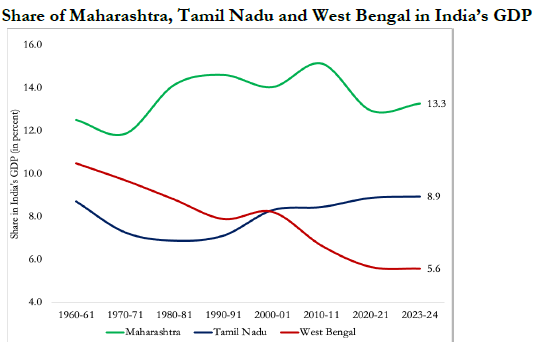
- Maharashtra remains the largest GDP contributor at 13.3%, but its share has declined from over 15%.
- Southern States' Growth: Southern states (Karnataka, Andhra Pradesh, Telangana, Kerala, Tamil Nadu) have emerged as major contributors to India's GDP, accounting for 30% by March 2024.
- Per Capita Income Data:
- Delhi, Telangana, Karnataka, and Haryana had the highest relative per capita income in 2023-24.
- Delhi's per capital income is at 250.8% of the national average.
- Gujarat (160.7% of the national average) and Maharashtra (150.7% of the national average) have maintained above-average incomes since the 1960s.
- Odisha per capita income improved significantly, rising from 55.8% in 2000-01 to 88.5% in 2023-24.
- Punjab vs. Haryana: Punjab has seen stagnation in economic growth since 1991, with per capita income falling to 106% of the national average.
- In contrast, Haryana has experienced substantial growth, with per capita income rising to 176.8%.
- Among Smaller States: Sikkim's per capita income rose from 93% of the national average in 1990-91 to 319% in 2023-24, while Goa's increased from 144% in 1970-71 to 290%. Both are now India's richest states by per capita income.
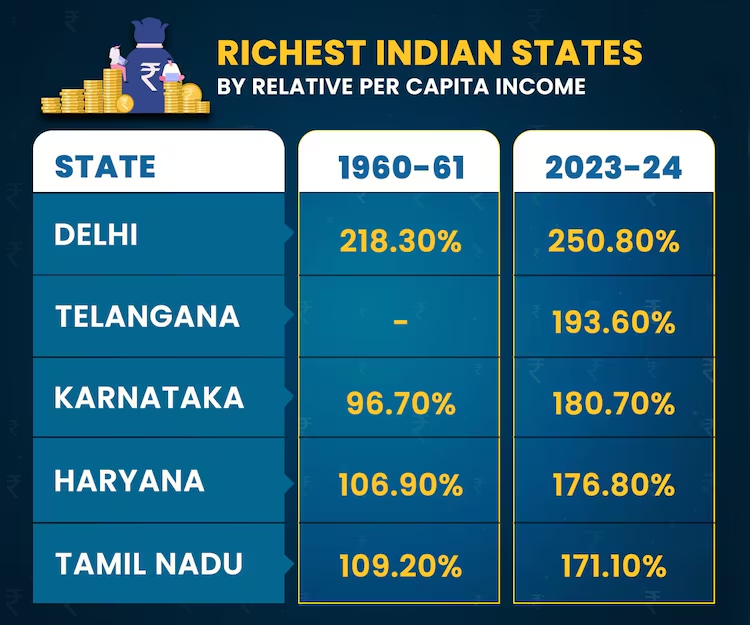
- Delhi, Telangana, Karnataka, and Haryana had the highest relative per capita income in 2023-24.
- Challenges for Poorest States: States like Uttar Pradesh and Bihar struggle to keep pace, with Uttar Pradesh contributing only 9.5% of GDP and Bihar just 4.3%.
- Despite some improvements in states like Odisha, Bihar remains significantly behind in economic growth.
- Need for Policy Investigation: The report highlights the need for deeper investigation into the policies and factors influencing state-level economic growth, particularly to address the widening regional disparities in India.
What are the Reasons for Steady Growth in West and South States?
- Robust Industrial Base: Gujarat and Maharashtra have a strong, diverse manufacturing base in sectors like textiles, chemicals, and engineering.
- Their investment-friendly policies have created a business-friendly environment, attracting significant domestic and foreign investments.
- Thriving Service Sector: Southern states like Karnataka and Tamil Nadu have experienced rapid urbanisation and improved infrastructure, boosting their IT and services sectors.
- A strong focus on education and skill development has created a skilled workforce, enhancing productivity and economic growth.
- Agricultural Advancements: Maharashtra and Kerala have adopted sustainable agricultural practices such as organic farming, crop diversification, water-efficient irrigation techniques, agroforestry and diversified outputs, boosting productivity and food security.
- Government support in irrigation, market access, and technology has further enhanced agricultural performance and economic growth.
- Strong Regional Connectivity: The Western and Southern regions have strong transport and logistics networks, with Gujarat's ports and Tamil Nadu's roadways enhancing trade.
- Proximity to major markets boosts local demand, driving economic growth in these states.
Economic Advisory Council to the Prime Minister (EAC-PM)
- It is an non-constitutional, non-statutory, independent body constituted to give advice on economic and related issues to the Government of India, specifically to the Prime Minister.
- The council serves to highlight key economic issues to the government of India from a neutral viewpoint.
- It advises the Prime Minister on economic issues like Inflation, Microfinance, and Industrial output.
- NITI Aayog serves as the Nodal Agency for the EAC-PM for administrative, logistic, planning and budgeting.
- Periodic Reports: Annual Economic Outlook, Review of the Economy.
What Measures Can be Taken to Enhance the Economic Performance of the States?
- Decentralised Planning and Governance: Empower local governments to formulate and implement development plans tailored to regional needs, involving local communities in decision-making processes to ensure inclusivity.
- Infrastructure Development: Prioritise investments in roads, railways, ports, and digital connectivity through Public-Private Partnerships (PPP) to enhance trade and mobility, ensuring timely execution and resource mobilisation.
- Sectoral Focus and Diversification: Enhance agricultural productivity through technology adoption and better irrigation while promoting agro-based industries.
- Encourage sector-specific policies that boost manufacturing (e.g., textiles, electronics) and services (e.g., IT, tourism) based on regional advantages.
- Skill Development and Human Capital: Implement vocational training programs aligned with industry needs to enhance employability while improving education quality by focusing on critical thinking and access to higher education.
- Innovation and Entrepreneurship: Foster a culture of innovation by supporting startups through incubators and funding, and encourage collaboration between academia, industry, and government for research initiatives that lead to technological advancements.
- Digital Transformation: Implement digital solutions for governance to ensure transparency and efficiency in public service delivery, while promoting digital literacy programs to equip citizens with necessary skills.
- Collaborative Governance: Foster collaboration between states to share best practices and resources, ensuring effective coordination between central and state governments to align policies and resources for development.
Conclusion
The steady growth in the Western and Southern states is a result of strategic planning, strong industrial and service sectors, effective government policies, and a focus on sustainable practices. As these states continue to innovate and adapt to changing economic dynamics, they play a crucial role in driving India towards its goal of becoming a USD 7 trillion economy by 2030. Addressing regional disparities and fostering inclusive growth will be essential to sustain this momentum and ensure balanced development across the country.
|
Drishti Mains Question: Discuss the key factors influencing the economic performance of states in India. Evaluate the role of policy interventions and suggest measures to enhance sustainable economic growth at the state level. |
UPSC Civil Services Examination, Previous Year Questions (PYQs)
Prelims
Q. Atal Innovation Mission is set up under the (2019)
(a) Department of Science and Technology
(b) Ministry of Labour and Employment
(c) NITI Aayog
(d) Ministry of Skill Development and Entrepreneurship
Ans: (c)
Q. The Government of India has established NITI Aayog to replace the (2015)
(a) Human Rights Commission
(b) Finance Commission
(c) Law Commission
(d) Planning Commission
Ans: (d)
Q. Sustainable development is described as the development that meets the needs of the present without compromising the ability of future generations to meet their own needs. In this perspective, inherently the concept of sustainable development is intertwined with which of the following concepts? (2010)
(a) Social justice and empowerment
(b) Inclusive Growth
(c) Globalization
(d) Carrying capacity
Ans: (d)
Mains
Q. How are the principles followed by the NITI Aayog different from those followed by erstwhile Planning Commission in India? (2018)
Q. Access to affordable, reliable, sustainable and modern energy is the sine qua non to achieve Sustainable Development Goals (SDGs).” Comment on the progress made in India in this regard. (2018)


Biodiversity & Environment
Reduction in CO2 from Transport Sector by 2050
For Prelims: World Resources Institute (WRI), carbon dioxide emissions, net-zero emissions goal by 2070, Electric Vehicle, internal combustion engine (ICE) vehicles, National Action Plan on Climate Change (NAPCC), National Hydrogen Mission, PM-KUSUM, ethanol blending, FAME initiative, International Solar Alliance (ISA), National Smart Grid Mission (NSGM), Perform, Achieve, and Trade (PAT) Scheme.
For Mains: Major challenges and measures to achieve Transport Decarbonisation.
Why in News?
A recent study by the World Resources Institute (WRI) India suggests that India's transport sector could reduce carbon dioxide emissions by up to 71% by 2050 through the implementation of high-ambition strategies.
- This significant reduction hinges on three key measures including, advancing electrification, enhancing fuel economy standards, and transitioning to cleaner modes of transport and mobility.
World Resources Institute (WRI)
- It is a global research organisation founded in 1982, with its headquarters located in Washington, USA.
- It spans more than 60 countries and focuses on six critical issues at the intersection of environment and development: climate, energy, food, forests, water, and cities and transport.
- WRI works with government, business, and civil society to drive ambitious action based on high-quality data and objective analysis.
What are the Key Findings of the Report?
- Current Emissions and Need for Targets:
- In 2020, India’s transport sector was responsible for 14% of the total energy-related CO2 emissions. There is an urgent need to establish an emission reduction roadmap and specific targets for this sector.
- Impact on Net-Zero Goals:
- Achieving high emission reduction targets in the transport sector is crucial for India to meet its net-zero emissions goal by 2070.
- Cost-Effectiveness of Decarbonisation:
- Transitioning to low-carbon transport is identified as the most cost-effective long-term policy, with potential savings of Rs. 12,118 per tonne of CO2 equivalent abated.
- Electric Vehicle Mandates:
- Expanding Electric Vehicle sales is particularly effective, with an annual CO2 emissions abatement potential of 121 million tonnes of CO2 equivalent. Complementing this with decarbonisation of electricity generation could enhance results.
- Additional Policy Benefits:
- Implementing a carbon-free electricity standard with 75% renewable energy could further achieve a 75% reduction in emissions by 2050.
- Future Fossil Fuel Dependency:
- Without significant intervention, fossil fuel consumption in the transport sector is expected to quadruple by 2050, driven by increased passenger and freight travel demands.
- Current Emission Sources:
- Road transport accounts for 90% of the sector’s emissions. Railways, aviation, and waterways account for a smaller fraction of energy consumption.
Note:
- Decarbonisation of Transport: Decarbonising transport refers to the process of minimising or eliminating carbon emissions from the transportation sector, with the objective of making transportation more environmentally sustainable and reducing its carbon footprint.
What are the Major Challenges in Achieving Transport Decarbonisation?
- High Dependence on Fossil Fuels:
- The global transportation sector is heavily reliant on fossil fuels such as gasoline and diesel, making the transition to cleaner alternatives challenging.
- Fossil fuel infrastructure is deeply embedded, and a complete overhaul requires significant time and resources.
- BAU (business as usual) Scenario:
- Under a BAU scenario, India's fossil fuel consumption (LPG, diesel, and petrol) is expected to increase fourfold by 2050, primarily due to rising demand in passenger and freight transport.
- Passenger travel is anticipated to witness a threefold growth by 2050, while freight transport is projected to increase sevenfold, further driving the surge in fossil fuel consumption.
- Lack of Clean Energy Infrastructure:
- Inadequate infrastructure for EV charging, hydrogen refuelling, and biofuel availability poses a major barrier to the widespread adoption of clean energy in transport.
- Energy Grid Constraints:
- The decarbonisation of transport is closely linked to the availability of renewable energy for the power grid.
- In many regions, electricity generation is still dominated by fossil fuels, limiting the benefits of electrification unless the energy mix is also cleaned up.
- Slow Policy Implementation and Regulatory Gaps:
- The pace of policy formulation and enforcement for transport decarbonisation is often slow.
- Regulatory frameworks for emissions standards, fuel efficiency, and alternative fuels are either lacking or insufficiently stringent in many countries, impeding progress.
- Consumer Behavior and Market Acceptance:
- Public reluctance to adopt alternative transportation modes or vehicles due to unfamiliarity, cost concerns, and perceived inconvenience hinders progress.
- Behavioural inertia and attachment to traditional vehicles present a significant challenge to scaling up clean transport solutions.
- Technological and Supply Chain Barriers:
- Achieving transport decarbonisation requires advances in battery technology, hydrogen production, and sustainable biofuel production.
- Supply chain disruptions for critical components, such as lithium and rare earth metals, can further complicate the transition.
- Financing and Investment Constraints:
- Decarbonising transport at scale demands massive capital investment in infrastructure, technology, and research and development.
- In developing nations, limited financial resources and competing development priorities restrict the capacity to invest in sustainable transport solutions.
- International Coordination:
- International coordination is crucial for effectively decarbonising the transport sector, but differing regulations, standards, and levels of commitment across countries create barriers to collaboration.
What are the Initiatives India has Undertaken for Energy Transition?
- National Solar Mission:
- Launched under the National Action Plan on Climate Change (NAPCC), the mission aims to achieve 100 GW of solar capacity by 2022, later revised to 280 GW by 2030.
- It promotes the development of solar energy infrastructure, focusing on large-scale solar power plants and rooftop solar installations.
- National Hydrogen Mission (NHM):
- NHM was launched in 2021, this initiative aims to make India a global hub for the production and export of green hydrogen.
- The mission focuses on research, production, and deployment of hydrogen as a clean energy source, with plans to meet 19% of India’s industrial hydrogen demand from green hydrogen by 2070.
- National Biofuel Policy:
- The policy encourages the blending of biofuels with conventional fuels to reduce dependency on fossil fuels.
- India aims for a 20% ethanol blending target by 2025, advancing the initial 2030 target to accelerate emission reduction in the transportation sector.
- Faster Adoption and Manufacturing of (Hybrid &) Electric Vehicles (FAME):
- Under the FAME initiative, the government incentivizes the adoption of EVs and hybrid vehicles.
- FAME-II, launched in 2019, provides subsidies for electric two-wheelers, buses, and charging infrastructure, with the objective of boosting clean mobility.
Way Forward
- Enhancing Renewable Energy Deployment:
- India can accelerate the deployment of solar and wind energy projects to meet and surpass the 2030 targets.
- Exploring offshore wind potential can diversify the renewable energy mix and contribute significantly to the energy transition.
- Strengthening Energy Storage Infrastructure:
- Developing large-scale battery storage solutions is essential for renewable energy integration and ensuring grid stability.
- Identifying and utilising suitable sites for pumped hydro storage can provide additional energy storage capacity.
- Advancing Grid Integration and Modernization:
- Deploying smart meters and grid automation technologies can enhance energy efficiency and facilitate the integration of renewable energy sources.
- Fostering Innovation in Clean Technologies:
- Increasing investment in Research and Development (R&D) for emerging clean technologies, including green hydrogen and advanced energy storage, can position India as a global leader in the energy transition.
- Strengthening Policy and Regulatory Frameworks:
- Ensuring stability and clarity in energy policies can attract investments and facilitate smooth implementation of energy projects.
- Streamlining regulations to remove bottlenecks and introducing incentives for renewable energy can accelerate the energy transition.
|
Drishti Mains Question: What are the major challenges associated with the decarbonisation of transport, and suggest methods to achieve sustainable energy goals by 2070? |
UPSC Civil Services Examination, Previous Year Question (PYQ)
Prelims
Q. Regarding “carbon credits”, which one of the following statements is not correct? (2011)
(a) The carbon credit system was ratified in conjunction with the Kyoto Protocol.
(b) Carbon credits are awarded to countries or groups that have reduced greenhouse gases below their emission quota.
(c) The goal of the carbon credit system is to limit the increase of carbon dioxide emission.
(d) Carbon credits are traded at a price fixed from time to time by the United Nations Environment Programme.
Ans: (d)
Mains
Q. Should the pursuit of carbon credits and clean development mechanisms set up under UNFCCC be maintained even though there has been a massive slide in the value of a carbon credit? Discuss with respect to India’s energy needs for economic growth. (2014)


Important Facts For Prelims
Megalithic Site in Kerala
Why in News?
Recently, a rainwater harvesting project in Kerala led to the discovery of a large number of megalithic urn burials.
- These findings were unearthed on Kundlikkad hill (also known as Malampalla or Malappuram hill) in the Nenmara forest division.
- An urn burial is a type of burial where the remains of a deceased person are placed in a pottery vessel, or urn, and buried.
What are the Key Facts about the Discovery of Megalithic Urn Burials?
- Classic Urn Burials: Typically, hilltop burial sites feature cairn heaps with cists, cairn circles, and stone circles burials.
- The presence of these urn burials, which date back over 2,500 years, is rare for a hilltop site.
- Urn Characteristics: The region contained pot sherds from different types of pottery, including black ware, red ware, and black and red ware.
- A notable find includes an urn with fingertip impressions, and smaller pots featured cord-impressed designs, indicating distinct decorative techniques used in pottery.
- Chisel marks were found on rocks across the hill, indicating that circling boulders were crafted using chisels.
- This suggests a more organised approach to burial construction in the area.
- Importance of the Discovery: It offers significant insights into the links between the Mesolithic because of the presence of microliths from the site and Iron Age periods in Kerala.
- Archaeologists say that such combination of mesolithic and iron age remains is unusual.
What is Megalithic Culture?
- About Megalith: Megaliths refer to monuments made from large stones. In most cases, megaliths are burial sites located away from habitation areas.
- Chronology of Megaliths: Based on the Brahmagiri excavation, megalithic cultures in South India are dated to between the 3rd century B.C. and 1st century A.D.
- Geographical Distribution of Megaliths in India: The main concentration of megalithic culture is in Deccan, especially south of the Godavari River.
- It has been found across Punjab Plains, Indo-Gangetic basin, Rajasthan, Gujarat, and Burzahom in Jammu and Kashmir.
- Important sites include Seraikala (Bihar), Khera (Uttar Pradesh), Deosa (Rajasthan) etc.
- Use of Iron in South India: The Megalithic period in South India was a full-fledged Iron Age culture, where the benefits of iron technology were fully realised.
- Iron objects such as weapons and agricultural implements were found from Junapani in Vidarbha to Adichanallur in Tamil Nadu.
- Subsistence Pattern: They lived on a combination of agriculture, hunting, fishing, and animal husbandry.
- Rock Paintings: Rock paintings found at megalithic sites depict scenes of hunting, cattle raids, and group dancing.
Note:
- Mesolithic period (middle stone) began about 12,000 years ago till about 10,000 years ago. Stone tools found during this period are generally tiny, and are called microliths.
- Microliths were probably stuck on to handles of bone or wood to make tools such as saws and sickles.


Important Facts For Prelims
Night Light Pollution Linked to Alzheimer’s Risk
Why in News?
According to a recent study published in Frontiers in Neuroscience, there is a correlation between night-time light pollution and the incidence of Alzheimer’s disease.
- Exposure to light at night disrupts natural circadian rhythms and impairs sleep, thereby increasing susceptibility to the disease.
Light Pollution
- Light Pollution refers to the excessive or inappropriate use of artificial lighting, which poses significant environmental threats to human health, wildlife, and the climate.
What is Alzheimer’s Disease?
- About:
- Alzheimer's disease is a progressive neurodegenerative disorder that affects the brain, leading to memory loss, cognitive decline, behavioral changes, problems with words in speaking or writing, poor judgment, changes in mood and personality, confusion with time or place, etc.
- It involves the formation of plaques and tangles in the brain, and the accelerated aging of certain neurons concerned with storage and processing of memory.
- Alzheimer's disease is the most common cause of dementia, accounting for 60-80% of dementia cases.
- Causes and Risk Factors: Currently the causes of Alzheimer is not fully known, still factors that may contribute to Alzheimer’s include:
- Age: Advancing age is the primary risk factor, with the majority of cases occurring in individuals over 65.
- Genetics: Certain gene mutations can increase the risk of developing Alzheimer's.
- Amyloid Protein: Alzheimer's disease is thought to be caused by the abnormal build-up of proteins in and around brain cells.
- One of the proteins involved is called amyloid, deposits of which form plaques around brain cells.
- Lifestyle Factors: Chronic conditions like cardiovascular disease, diabetes, obesity, smoking, and a sedentary lifestyle may contribute to the risk.
- Diagnosis:
- Cognitive and neuropsychological tests to assess memory, thinking, and problem-solving abilities.
- Imaging techniques (MRI, PET scans) to identify brain changes.
- Biomarker tests (cerebrospinal fluid analysis, amyloid PET) to detect amyloid plaques.
- Treatment and Management:
- There's currently no cure for Alzheimer's disease. But there is medicine and supportive therapies available that can temporarily reduce the symptoms.
- Prevalence:
- According to WHO estimates from 2023, over 55 million individuals globally are affected by dementia, with Alzheimer's accounting for approximately 75% of these cases.
- In India, an estimated 3 to 9 million people are believed to be affected by the condition, a figure expected to rise as the nation's population ages.
Note:
- Dementia: It is a syndrome – usually of a chronic or progressive nature – that leads to deterioration in cognitive function (i.e. the ability to process thought) beyond what might be expected from the usual consequences of biological aging.
- It affects memory, thinking, orientation, comprehension, calculation, learning capacity, language, and judgment.
- However, the consciousness is not affected.
- It affects memory, thinking, orientation, comprehension, calculation, learning capacity, language, and judgment.
UPSC Civil Services Examination, Previous Year Question (PYQ)
Q. Which of the following are some important pollutants released by steel industry in India? (2014)
- Oxides of sulphur
- Oxides of nitrogen
- Carbon monoxide
- Carbon dioxide
Select the correct answer using the code given below:
(a) 1, 3 and 4 only
(b) 2 and 3 only
(c) 1 and 4 only
(d) 1, 2, 3 and 4
Ans: (d)
Q. In the context of solving pollution problems, what is/are the advantage/advantages of bioremediation technique? (2017)
- It is a technique for cleaning up pollution by enhancing the same biodegradation process that occurs in nature.
- Any contaminant with heavy metals such as cadmium and lead can be readily and completely treated by bioremediation using microorganisms.
- Genetic engineering can be used to create microorganisms specifically designed for bioremediation.
Select the correct answer using the code given below:
(a) 1 only
(b) 2 and 3 only
(c) 1 and 3 only
(d) 1, 2 and 3
Ans: (c)


Rapid Fire
Role of Helium in Rockets
Two NASA astronauts aboard Boeing’s Starliner will remain on the International Space Station (ISS) for an extended period due to a faulty propulsion system, which has been affected by helium leaks.
- Past missions affected by helium leaks include ISRO’s Chandrayaan 2 and ESA’s Ariane 5.
- About Helium (He):
- It is the second-lightest element after hydrogen, characterized as a colorless, odorless, tasteless, and inert gas with an atomic number of 2.
- Helium is a stable, non-reactive noble gas. While non-toxic, it cannot be breathed on its own as it displaces the oxygen needed for respiration.
- It has a very low boiling point (-268.9° C), allowing it to remain a gas even in super-cold environments, making it useful for cryogenics.
- This helps reduce rocket weight and energy needs, which lowers fuel consumption and engine costs.
- Rocketary Applications:
- Maintains consistent fuel flow by pressurising tanks.
- Assists in cooling systems for storing rocket fuel and oxidizer at very low temperatures.
- Fills empty space in tanks as fuel is used, keeping pressure stable.
- Helium is also used in industrial welding, leak detection systems, etc.
- Some launches such as ESA’s Ariane 6 have experimented with other inert gasses like argon and nitrogen, which can be cheaper alternatives. However, helium remains the most widely used gas in the space industry.
Read More: Cryogenics, Astronauts Stuck in ISS.


Rapid Fire
BHASKAR: Platform For India’s Startup Ecosystem
The Department for Promotion of Industry and Internal Trade (DPIIT), Ministry of Commerce and Industry is set to launch the Bharat Startup Knowledge Access Registry (BHASKAR), a platform under the Startup India program, aimed at enhancing collaboration and innovation within the country's startup ecosystem.
- BHASKAR is designed to centralize and streamline interaction among startups, investors, mentors, service providers, and government bodies, with the primary goal of building the world’s largest digital registry for stakeholders, facilitating seamless collaboration and access to resources.
- The platform will serve over 1,46,000 DPIIT-recognised startups, enabling personalized engagement through BHASKAR IDs for each stakeholder.
- The platform is expected to drive innovation, job creation, and the overall growth of India's startup ecosystem, aligning with the country's vision to become a global leader in entrepreneurship.
- Current Scenario of India’s Startup Ecosystem: India ranks 3rd globally in the startup ecosystem. Between 2014 and 2023, the number of startups in the country surged from approximately 7,000 to over 80,000.
- The country has seen the rise of over 100 unicorns and a few decacorns, reflecting the maturity and success of Indian startups.
Read More: Indian Startup Ecosystem, India’s Startup Ecosystem, Six Years of Digital India Programme
Rapid Fire
NPS Vatsalya Scheme
Recently, the Union Finance Minister unveiled the NPS Vatsalya scheme announced in the Union Budget as a new pension plan for minors.
- Under the scheme, the Vatsalya account requires a minimum initial contribution of Rs 1,000 to open. Subscribers must make an annual contribution of Rs 1,000 each year to maintain the account.
- Upon reaching adulthood (18 years), the account is automatically converted into a standard National Pension System (NPS) account. Pension will come from the account only after they turn 60.
- It is regulated and administered by the Pension Fund Regulatory and Development Authority (PFRDA) and Permanent Retirement Account Number (PRAN) cards will be issued to newly registered minor subscribers.
Read More: Union Budget 2024-2025, National Pension System


Rapid Fire
Earth’s Temporary Mini-Moon
A recent study indicates that Earth's gravitational field is expected to temporarily capture a small asteroid, called 2024 PT5, by late September 2024.
- Mini-Moon:It refers to small asteroids that are temporarily captured by Earth's gravitational pull, resulting in short-term orbital paths around the planet. These celestial bodies are typically minute in size and often elude detection.
- This phenomenon is rare, as in most cases, asteroids either miss the planet or burn up upon entering Earth's atmosphere.
- Only four mini-moons have ever been discovered, and none are still orbiting Earth. Some of these may have been mistaken for space debris, like the Gaia spacecraft or rocket stages from past missions.
- 2024 PT5:
- It was detected by NASA. It will contribute to advancing scientific understanding of near-Earth asteroids, particularly those that frequently approach or occasionally impact the planet.
Read More: Space Missions in 2024, International Asteroid Day



